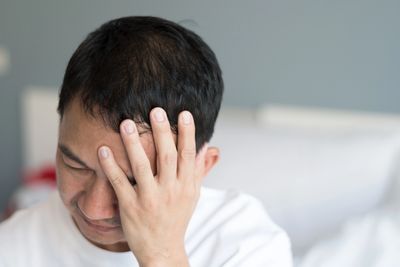Post Concussion Symptoms? Acupuncture Can Help
Concussion Relief with Eugene's Sports Acupuncture Experts Acupuncture
Post‑concussive syndrome (PCS) refers to a cluster of lingering symptoms that may persist for weeks to months after a concussion—a mild traumatic brain injury caused by a blow, fall, collision, or rapid acceleration/deceleration that makes the brain move inside the skull. Common PCS symptoms include headaches, dizziness or balance problems, fatigue, light sensitivity, concentration and memory difficulty, slowed thinking (“brain fog”), mood changes (irritability, depression, anxiety), and sleep disturbance.
Not everyone who sustains a concussion develops PCS. Risk appears higher with factors such as prior concussion, older age, and pre‑existing anxiety or depression. Females experience PCS at roughly twice the rate of males—likely reflecting hormonal influences, neck strength differences, biomechanics, and greater symptom reporting. Estimates suggest about 10–20% of adults with concussion develop PCS (higher in some studies depending on how symptoms are counted). Roughly half of concussion patients recover by 3 months, most by 1 year, but 10–15% continue to struggle beyond a year.
Why do symptoms linger?
PCS is multifactorial: neuroinflammation, cervical soft‑tissue injury, neurometabolic “energy deficit,” disrupted neurotransmission, and psychological stress can interact to prolong recovery. Neck involvement is common—up to 90% of persistent PCS patients report neck pain or related symptoms. Cervical soft‑tissue nociception can perpetuate pain, muscle spasm, and autonomic dysregulation, compounding central symptoms. Cognitive complaints may exceed objective testing and are amplified in those with anxiety, depression, ADHD, PTSD, or migraine history. Vestibular and oculomotor disturbances (inner‑ear/balance and eye‑tracking systems) frequently accompany concussion and contribute to dizziness, poor balance, visual strain, and nausea; addressing these peripheral drivers is essential. Sports with higher concussion exposure—football, hockey, soccer, MMA/boxing, rugby, basketball, lacrosse, wrestling, cheer, skiing, snowboarding—carry greater PCS risk across all competitive levels.
Role of Sports Acupuncture & Dry Needling
Sports acupuncture and dry needling (DN) are increasingly used as adjuncts within individualized, multimodal PCS rehabilitation. Meta‑analyses show acupuncture can yield modest but meaningful short‑term improvements in pain and function vs sham. DN trials and reviews demonstrate clinically significant reductions in pain and pressure pain thresholds—especially when treating active trigger points—with benefits most evident in the first 1–2 months. Emerging work in post‑traumatic headache, dizziness, mood, and stress pathways supports integrating needling into broader concussion care. High‑profile athletes (NFL, pro basketball, MLS) have incorporated acupuncture alongside cervical, vestibular, and conditioning rehab to return to play, underscoring its real‑world relevance in sports recovery.
Early management after concussion now favors brief relative rest (24–48 hrs) followed by a graded, sub‑symptom return to activity; strict long‑term “cocooning” is discouraged. Lifestyle steps—sleep hygiene, controlled screen time, gentle exercise, anti‑inflammatory nutrition, and cervical care (including gentle acupuncture)—support recovery.
Needling approaches are low‑risk when performed by trained professionals and may help regulate pain, sleep, mood, and cognitive function through neurovascular and neurochemical effects—valuable additions to standard medical and rehab care for persistent PCS.
Serving athletes, active adults, and concussion patients in Eugene, Oregon—contact Anjuna Sports Acupuncture to discuss an integrated PCS recovery plan.
